This was published 8 years ago
Monaco's Prince Albert is on a mission to protect the environment
Beneath Monaco's glamourous exterior is a growing green side, aided in part by royal appointment.
By Kerry van der Jagt
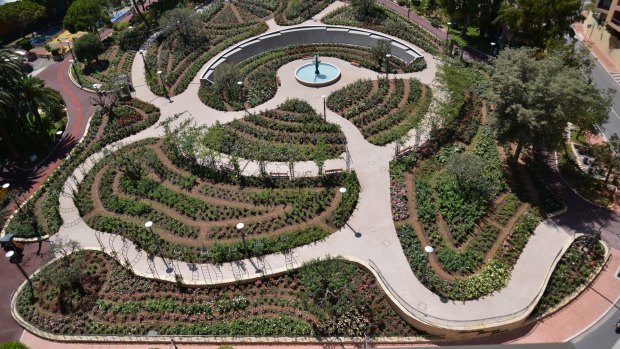
Monaco's Princess Grace Rose Garden.
It's mid-summer in Monaco and a crowd has gathered near Larvotto Beach for an open-air performance. With a flick of the director's wrist, the children's voices rise as one. Faces beaming, chests puffed like pigeons, they launch into their final rendition.
"I'm a pirate of the abyss," they chant, fists thrust to the sky. "I promise to protect the ocean. I promise to stop pollution. I promise to protect the whales." The crowd applauds, cameras click. "Hooray for nature," the children shout. "Hooray for pirates."
Now wait a minute. This is Monaco – refined, elegant, home to the world-renowned Boys Choir and Monte-Carlo Ballet, where James Bond sips martinis and red carpets line the streets.
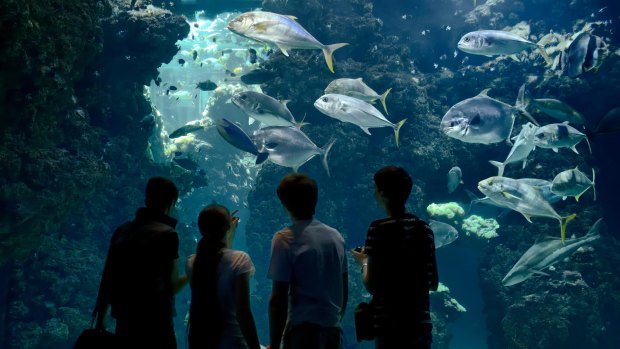
The Oceanographic Museum's shark lagoon aquarium, Monaco.
But, as I'm discovering, it also has a blue heart. "To live in a beautiful and healthy place like Monaco we have a responsibility to care for it," says Pierre Frolla, a native Monegasque, four times free diving world champion and director and founder of Ecole Bleue, Academie de la Mer (the Blue School Sea Academy).
It's the children's final afternoon of a five-day aquatic school and the party atmosphere is their reward. "We teach the children about safety, how to snorkel and dive, and why we must protect the ocean," says Frolla. "But we also teach them courage, humility, fraternity, passion and honour."
Frolla began the Blue School in 2002 with a handful of children. "In 2015 we had 2500 kids and a staff of 17," he says proudly, counting the staff by name on his fingers. In the past few years Frolla has seen interest in conservation and stewardship really take off, thanks to his serene highness Prince Albert II, who, in 2006, established the Prince Albert II of Monaco Foundation to support private and public organisations in research, technological innovation and socially-aware practices.
Monaco boasts not one, but two marine protected areas.
Under the prince's reign, topics such as biodiversity, the management of resources and the reduction of greenhouse gasses – as well as a specific policy towards the establishment of a sustainable city – are among the most important political priorities of the State of Monaco.
At the Oceanographic Museum, I learn that the prince's commitment to the environment began with his great-great grandfather, Prince Albert I – a navigator who devoted his life to the study of oceans, founding the museum in 1910 so he could study the collections he brought back from his expeditions.
Built into the side of the mythical Rock of Monaco, this "Temple to the Sea" is entirely dedicated to arts and science. It's filled with world-class aquariums, a shark lagoon, fish nursery and turtle island. On the day I visit, the schoolchildren are out – plunging hands into touch pools, feeding sharks, gazing in wonder at the world's first submarine, taking photographs of Prince Albert I's original ship-based laboratory.
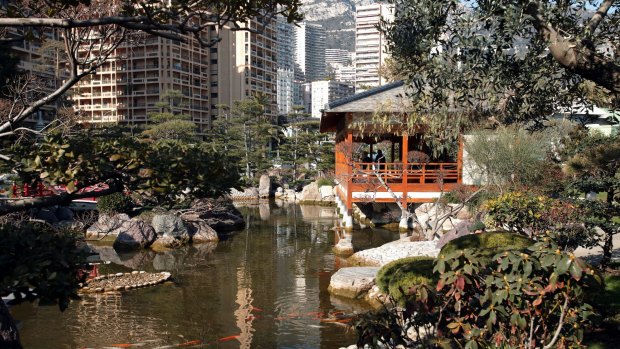
Monaco's Japanese Garden.
While it looks like fun there is a serious side, with the aquarium acting as a laboratory for cutting-edge research into the breeding of reef-building coral.
To safeguard its most valuable asset, Monaco boasts not one, but two marine protected areas. To learn more about these reserves I've arranged a meeting with Jacqueline Gautier-Debernardi, director of the Monegasque Association for the Protection of Nature, and Monaco's Woman of the Year for 2015.
"These reserves are not playgrounds, they are living laboratories," says Gautier-Debernardi. "We understand their importance and fragility, so twice a year we organise a 'clean up the beach' day." Sitting with her inside the organisation's humble office, I'm having difficulty reconciling the two sides of Monaco: the razzle-dazzle I've seen, with the care and concern I'm learning about. "Even the old people in nursing homes help by crafting artificial reefs used to replenish the coral," says Gautier-Debernardi.
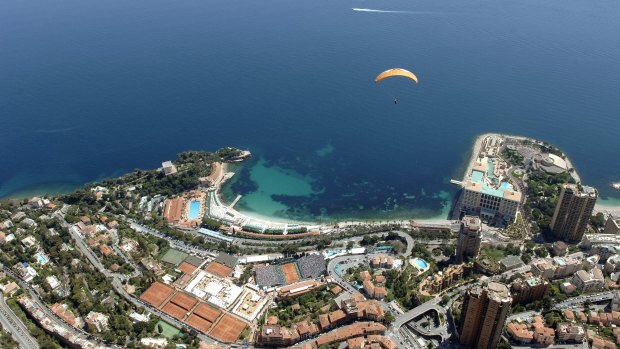
A bird's-eye view of the blue and green of Monaco
Thanks to Prince Albert II, Monaco also has an emerging green side. From the self-serve electric bike stations, sustainable architectural practices (the Grimaldi Forum is one of the greenest buildings in Europe), even a law prohibiting the felling of a single tree, the municipality is showing its commitment to Rio+20. Furthermore, 2015 saw Monaco host its first FIA Formula E Championship, part of a worldwide racing series of electric cars.
The real surprise is that while Monaco is a tiny two square-kilometres, it is blessed with 20 per cent green and garden spaces. These include the Princess Grace Rose Garden, a Japanese garden on the Mediterranean and the Saint Martin Gardens. One of the best is the Jardin Exotique de Monaco, a collection of weird and wacky plants that opened to the public in 1933.
Built into the side of a cliff, the garden is a prickly mess of exotic cactuses and hairy succulents, all knobby knees and Triffid-like limbs cartwheeling down the mountain. Descending the steep path, I take in one of the best views of Monaco – over the glamorous buildings, most of which sprout mops of green rooftop gardens, all the way to the Mediterranean Sea, twinkling in the distance.
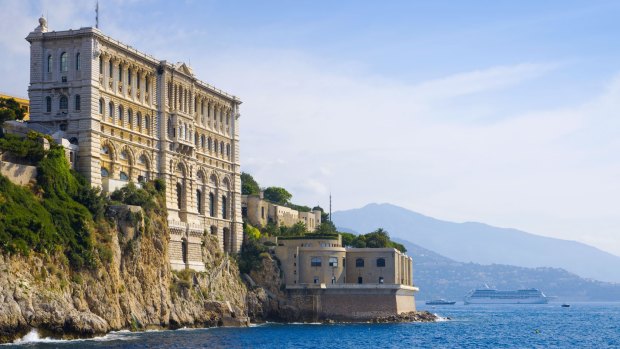
The Oceanographic Museum of Monaco, founded by Prince Albert II's grandfather in 1910.
While the glitz and glamour will always be there, it's reassuring to know that a small army of pirates and grandparents, blue-bloods and green thumbs are working behind the scenes to protect the environment. Hooray for nature, hooray for pirates.
The writer travelled with the assistance of Visit Monaco and Avalon Waterways
TRIP NOTES
MORE INFORMATION
GETTING THERE
Cathay Pacific operates several flights a day from Sydney and Melbourne, via Hong Kong, to key European gateways including London, with connections to Nice via British Airways. Monaco is 30 minutes by car or a little less by train. See cathaypacific.com.au
STAYING THERE Le Meridien Beach Plaza has classic rooms from $266 a night. Situated on the beach, it is within walking distance of most attractions. See lemeridienmontecarlo.com
SEE+DO Ecole Bleue runs five-day courses during the summer school holidays (8-12 years in the mornings, 12-16 years in the afternoons) for $375 a child. See ecolebleue-monaco.com.
Sign up for the Traveller newsletter
The latest travel news, tips and inspiration delivered to your inbox. Sign up now.